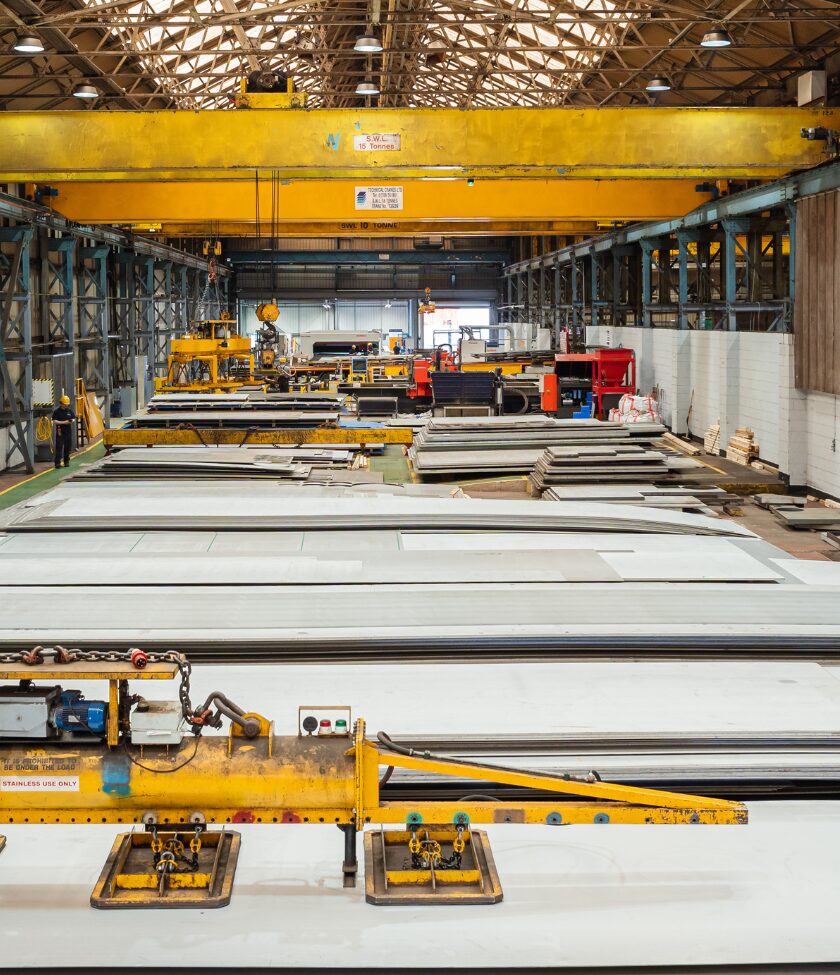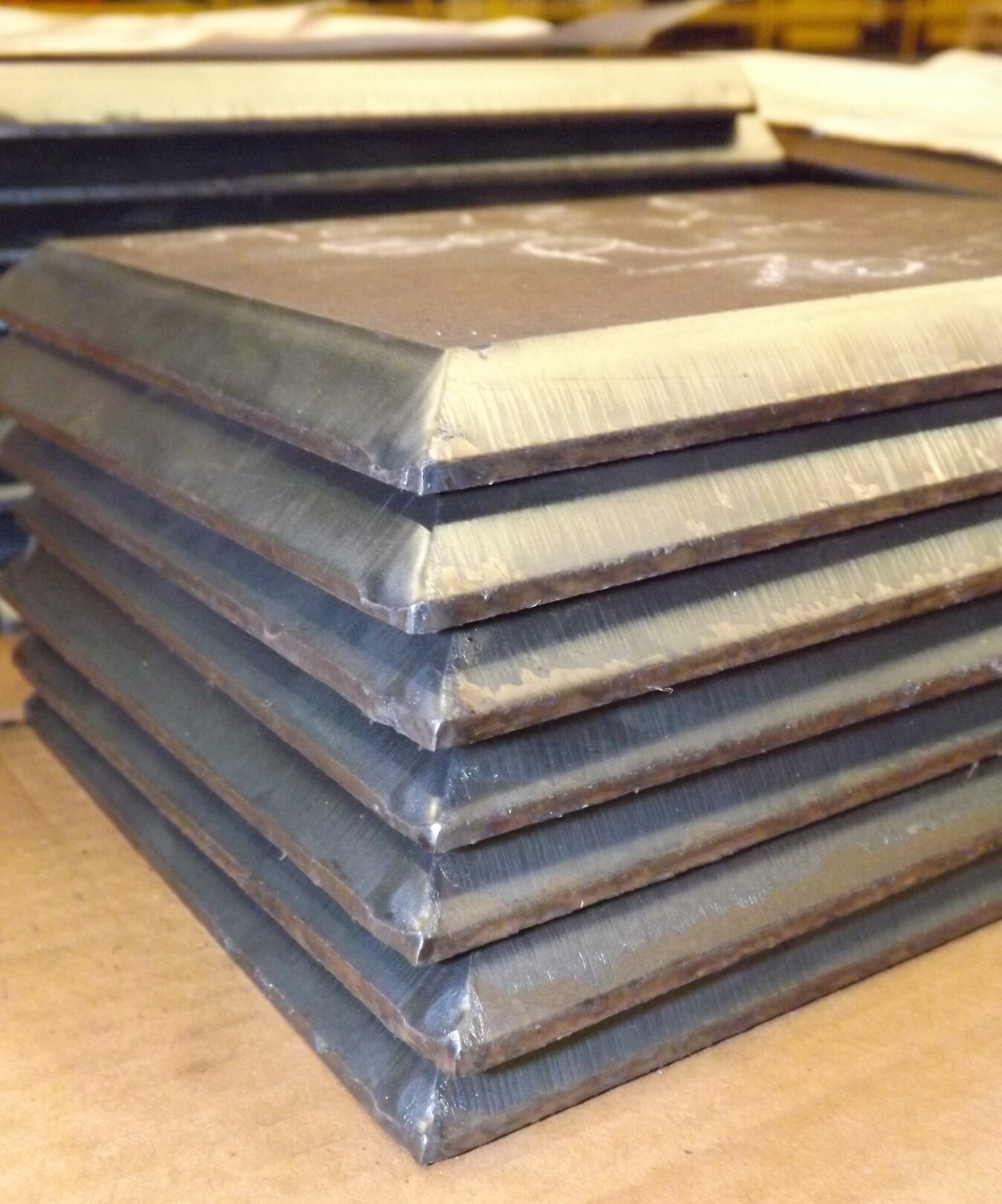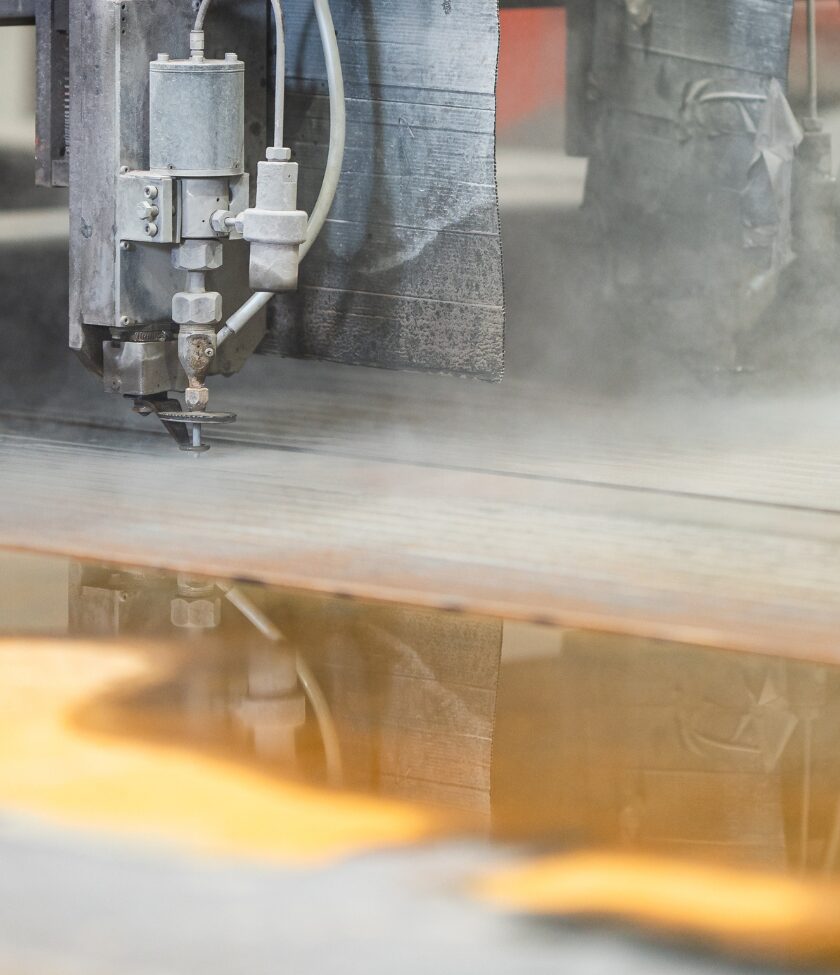The transition to renewable energy is an essential step toward securing a sustainable future for our planet. Clean energy sources such as wind, tidal, and solar power are at the forefront of efforts to reduce carbon footprints and combat the escalating threats of climate change.
These renewable energy solutions offer a greener, cleaner future, but their development poses significant challenges. Building the infrastructure necessary for these energy systems requires precision, expertise and high-quality materials, with steel plates playing a critical role in the construction, support and durability of renewable energy frameworks like wind turbines and tidal power stations.
As a globally recognised leader in steel plate supply, Brown McFarlane is a trusted and innovative partner to the renewable energy sector. With over 20 years of experience in supplying and processing steel plates for renewable energy projects worldwide, we combine expertise with a commitment to sustainability. We offer a wide selection of high-quality materials specifically tailored to meet the rigorous demands of renewable energy infrastructure.
Is Steel Used in Renewable Energy?
Yes. Steel plays a vital role in renewable energy projects due to its exceptional strength, flexibility and durability. Its applications are wide-ranging, from providing structural support for towering wind turbines to withstanding the corrosive environments of tidal energy systems. These qualities make steel indispensable for ensuring the reliability and resilience needed in the development of sustainable energy solutions.
Steel Plates in the Wind Energy Sector
Building Wind Turbine Towers
Wind energy, both onshore and offshore, heavily relies on steel plates. Wind turbine towers, often exceeding 100 metres in height, require robust foundations and support structures. Plates graded to standards such as EN 10025 S275, EN 10025 S355NL, S690QL, and S890QL are fundamental in these constructions. These grades ensure the necessary strength and durability to withstand heavy loads, high wind speeds and varying weather conditions.
Handling Massive Plate Sizes and Thicknesses
The trend of building larger turbines means steel plate suppliers must also handle increasing sizes and thicknesses. Brown McFarlane’s extensive range of steel plates, from 6mm to 300mm in thickness, provides excellent solutions. Plus with comprehensive plate cutting capabilities, we can handle both standard and custom-sized requirements.
Why Brown McFarlane?
With a long-standing partnership with Europe’s top steel mills, we deliver various steel grades with precision and reliability.
Steel Plates in Tidal and Wave Energy
Tidal and wave energy technology is gaining momentum, with systems built to endure harsh underwater environments. Steel plates are critical in key components, providing strength, corrosion resistance, and resilience against waves and currents.
High-Strength Grades for Stressed Components
To handle the immense stress and pressure of tidal systems, high-strength grades like EN 10025 S690QL and S890QL are utilised. These plates offer superior strength-to-weight ratios, helping to optimise performance in challenging conditions.
Corrosion-Resistant Stainless Steel
Environments with constant exposure to water demand materials that resist corrosion. Brown McFarlane supplies premium stainless steel options, including 316L, 31803 Duplex, and 32750 Super Duplex. These grades are specifically designed for long-term durability and structural integrity in demanding applications under the sea.
Material Benefits of Steel for Renewable Energy
- Exceptional Corrosion Resistance: Applications in renewable energy often face atmospheric and underwater challenges. Duplex stainless steel, for example, provides excellent corrosion resistance in offshore and underwater systems.
- High-Performance Wear Resistance: For areas subject to high levels of abrasion, such as the moving components in tidal and wave energy devices, abrasion-resistant steel ensures a longer operational life and lower maintenance costs.
- Sustainability of Steel: Steel is one of the most recyclable materials globally, with a minimal energy footprint during recycling processes. Its durability also translates to fewer replacements, making projects more sustainable overall.
Advanced Processing Techniques for Steel Plates
Brown McFarlane continuously invests in advanced processing technologies to provide custom steel plate solutions for renewable energy systems.
Messer Infinity Plasma Skew Bevel Technology
This cutting-edge bevel technology delivers variable geometry weld preps with exceptional precision. By reducing labour and improving tolerances, it ensures cost-effective and reliable results.
Waterjet Cutting for Intricate Designs
Our two state-of-the-art waterjet machines with cutting dimensions up to 6000mm x 3000mm offer eco-friendly solutions for intricate components, especially for temperature sensitive projects.
Durma Capabilities
Durma Fibre Laser technology enables the cutting of steel plates at sizes up to 12000 x 3000 x 25mm, allowing precision in even the most oversized or complex designs.
Machining Capabilities
Beyond cutting, Brown McFarlane offers drilling and profiling services to refine plate components, ensuring they’re ready for immediate assembly and application.
Why Partner with Brown McFarlane?
With a wide selection of steel grades, precision processing services, and a solid environmental ethos, Brown McFarlane is the trusted partner for renewable energy systems. From complex wind turbine towers to advanced tidal power machines, our expert team will help guide your project to success.
We have also earned recognition as one of the first carbon and stainless steel stockholders to achieve ISO 14001 environmental certification, showcasing our commitment to sustainability.
Need the perfect steel plate solution for your renewable energy project? Contact Brown McFarlane to learn more about our range of products and services.
Frequently Asked Questions
Is steel environmentally friendly and sustainable?
Yes, steel is highly regarded for its environmental friendliness and sustainability. It is one of the most recycled materials worldwide, with an estimated 85-90% of steel products being recovered and reused. Furthermore, modern steelmaking processes have significantly reduced energy consumption and greenhouse gas emissions, making steel a key material in sustainable construction and manufacturing.
What is the most eco-friendly metal?
Steel and aluminium are often considered among the most eco-friendly metals due to their high recyclability and energy efficiency during recycling. However, the specific application often determines the most sustainable choice.
How recyclable is structural steel?
Structural steel is nearly 100% recyclable without any loss of quality. Steel can go through multiple cycles of use, remelting and reshaping while maintaining its performance and properties. This makes structural steel a highly sustainable choice for infrastructure and construction projects.
How much steel is needed to build a wind turbine?
The steel required for a wind turbine depends on the size and type of the turbine. For example, the average onshore wind turbine typically uses 120-150 tons of steel, primarily in its tower, nacelle, and foundations. Offshore wind turbines may require even more due to their larger size and the need for additional structural support to withstand marine conditions.
Related News


Weathering Steel Explained: Grades, Benefits & Applications

